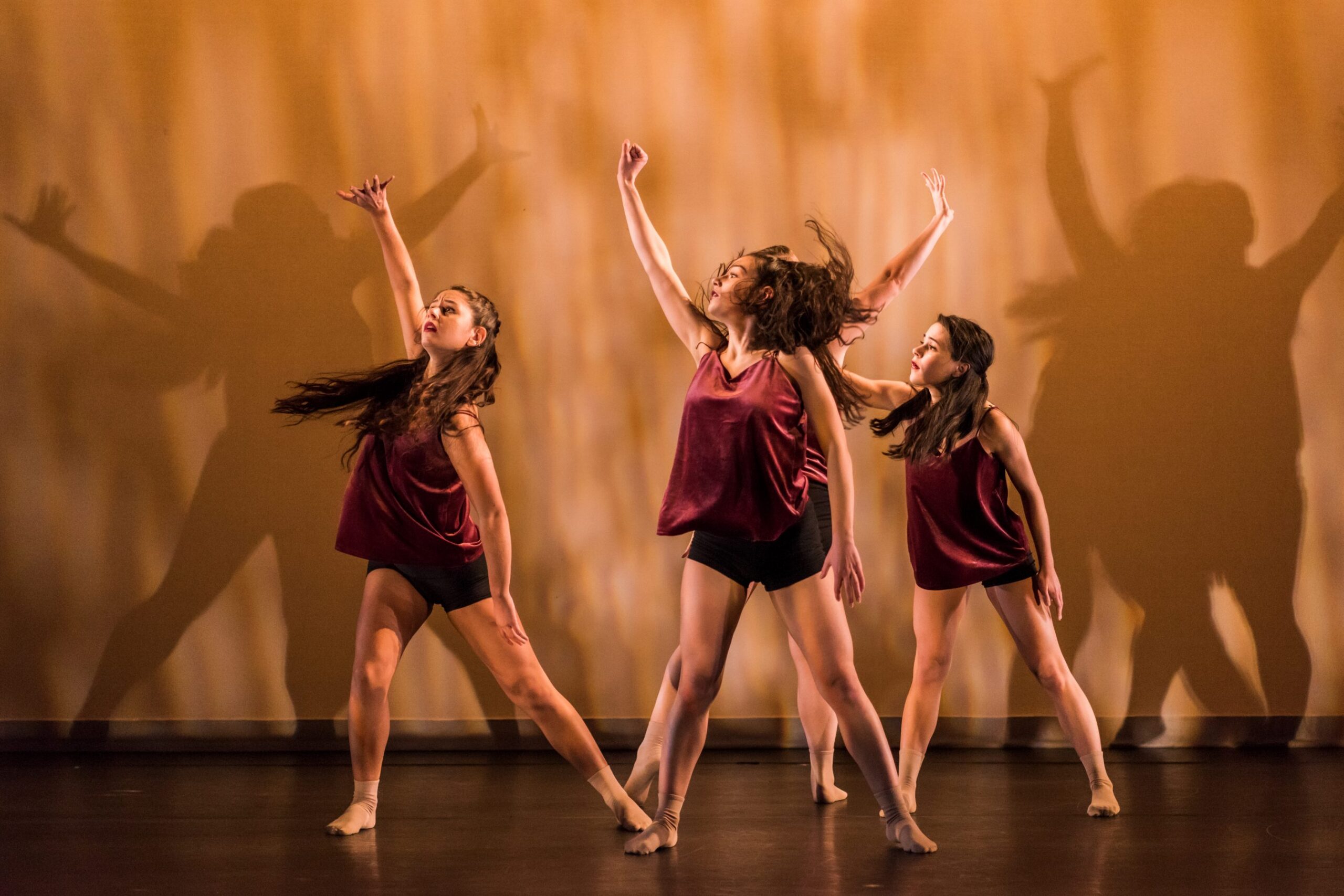He’s a bassoonist and chemical engineer. She’s a dancer and social justice advocate. UMBC students have a lot of focus, but that doesn’t mean they have to focus on one thing. For many, the UMBC experience is about figuring out how to combine their passions, not chose one or the other. Here, four UMBC students graduating this spring share how they have found their own unique balance.
Pitching an idea
Senior Jeff Carr can easily recall one of the most pivotal moments of his first year at UMBC. Jason Schiffman, psychology, was speaking to the new cohort of Retrievers and simply told them “this place will be what you make it.”
“It really resonated with me. This was a place where I could restart and find myself,” remembers Carr. “I get kind of emotional looking back over my four years…I’ve done a lot here and I think part of that is the faculty and the community just motivated me to want to do so.”
For Carr, financial economics, sports were part of life. Growing up in nearby Linthicum, he spent much of his time crouched on a baseball diamond as his high school’s catcher. A shoulder injury ultimately derailed his athletic career, but coming to UMBC allowed him to turn that passion into a future profession.
A chance meeting with a member of the athletics department led to an introduction with Liam Bowen, associate head baseball coach. Carr joined the team as baseball manager, filling in wherever he was most needed, from booking catering to helping with scouting reports.
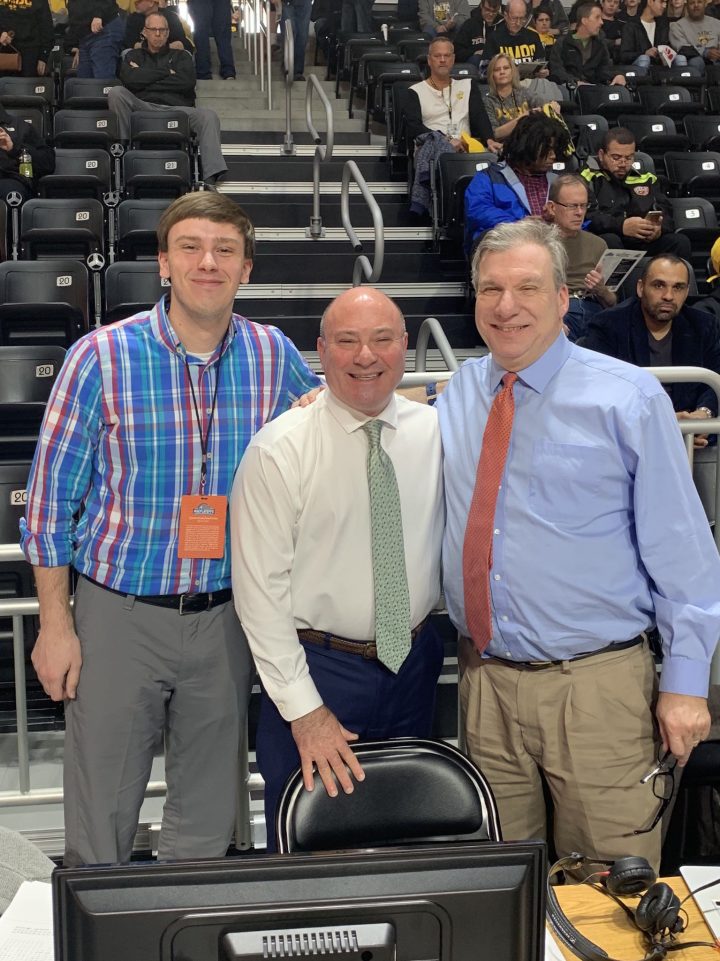
Carr’s biggest contribution came in his sophomore year. “Players would chart pitches during the game using pencil and paper and then I would have to total everything up by hand. One day, I had the realization that the strike zone is basically a graph with X-Y coordinates, so we could just chart pitches using some type of phone app,” explains Carr.
As a result of this epiphany, Carr set out to develop pitchTrax, an app that would track pitches and log the results in a spreadsheet, eliminating the need for hand tabulation.
“Three years ago, I told him that I was interested in tracking our pitchers’ statistics at a granular level and getting the information organized in a way that they could use,” says Bowen. “Jeff took off with the idea and created a system where we could see virtually every aspect of our pitchers’ performance. I have used the information that he has gathered countless times with our players and our program is very much in his debt.”
Carr enlisted the help of economics professor Scott Farrow to turn his ideas into reality. Farrow suggested Carr use heatmap quadrants and helped him refine the visual representation of the pitching data. “Jeff is a great example of becoming outstanding by following a particular interest and then having new opportunities grow from that success,” says Farrow.
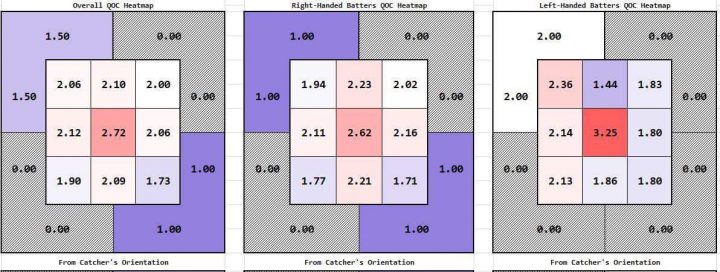
Carr has continued to develop his expertise in sports analytics and will soon begin his master’s degree in sports management at the University of Michigan. But he won’t forget his roots anytime soon.
“I feel like my experience here…I’ve been very lucky, but I’ve also been around the right people,” says Carr. “The community here is so welcoming and that’s the most important part, for me. Everyone has a story like mine and we didn’t do it on our own—it’s all thanks to the people [at UMBC] supporting us.”
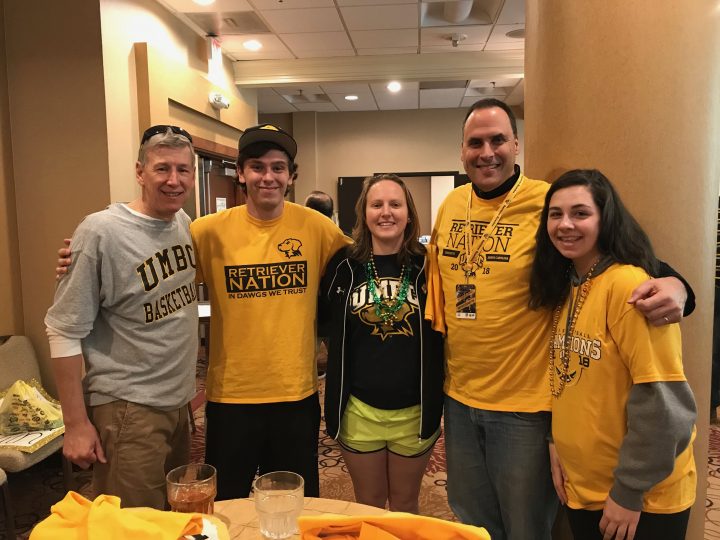
Justice through performance
The individualized study program at UMBC encourages students to take the road less traveled, or never before traveled, and create their own major. Alexia Petasis jumped at the chance to combine her passion for choreography with her commitment to social justice, a pairing that would define her time at UMBC.
“Dance has always been a big part of my life, but throughout college I became equally interested in social justice activism. When I came to UMBC, I was able to explore the intersections between them,” says Petasis. “I started learning how they could work together to create and inform empathetic dances that grow an individual’s understanding of an issue.”
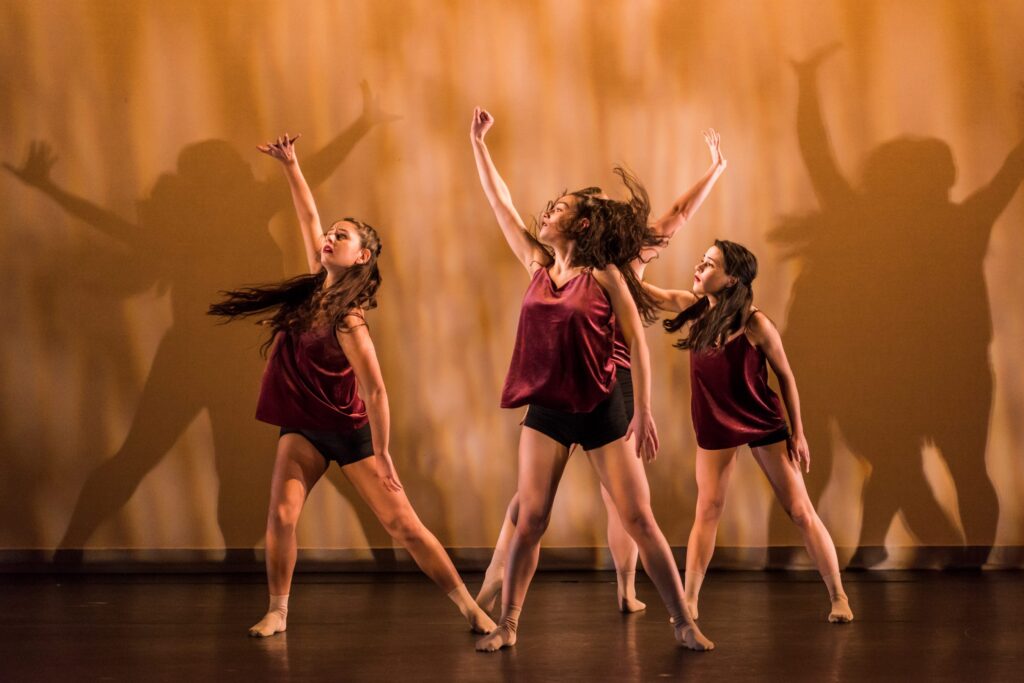
Taking courses in psychology, sociology, dance, and gender and women’s studies helped Petasis to envision how she could use elements from each in developing a cohesive piece.
“She is consistently looking for new ideas and ways to communicate through the body,” says Doug Hamby, associate professor of dance, of Petasis’s work. “Once she sets out on an creative journey she expands and deepens her exploration until the dancers embody every nuance Alexia intends to communicate to her audience.”
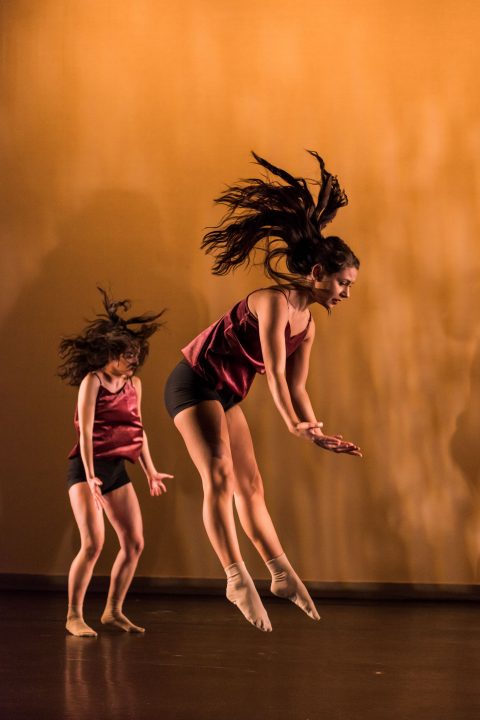
Petasis’s most ambitious work eventually became her capstone project, an evocative dance piece that “brings to light the experiences of survivors of domestic sex trafficking from the point of view of the victim.”
Petasis explains, “This dance, titled ‘Becoming Survivor,’ calls attention to the various ways a victim can become trapped in the life of human trafficking and offers a deeper understanding of the manipulation into exploitation that occurs.”
“In addition to showing her dance, Alexia saw the importance of using this opportunity to share community resources and have a dialogue about sexual violence in our communities,” says Jess Myers, director of UMBC’s Women’s Center. “Alexia’s dance has brought communities together—We Believe You, the Women’s Center, other on-campus and off-campus partners—to help create space for our UMBC community to have complex conversation about consent and sexual violence.”
Myers lauds Petasis’s keen ability to encourage others to see themselves as people who can have a social impact. She notes, “Alexia uses dance to tell stories that often go unheard. Her interdisciplinary work is grounded in inclusion and inviting others to care about issues they may not have otherwise known mattered to them.”
Taking the skills the she’s learned and the advice from the mentors she’s met along the way, Petasis is pursuing a teacher’s assistant program in France. “My time at UMBC has allowed me to pursue my passion and research interests with guidance, mentorship, and an overwhelmingly supportive network.”
At home in the lab…and on stage
“The world needs more Justins!” exclaims Kim Leisey, associate vice president of Student Affairs, when you ask about senior Justin Hosten. Leisey met Hosten when she taught a class for new Residential Life student staff. “If you want to know him, listen to him play the bassoon—it’s soulful and expressive,” she says. “Justin travels UMBC with gentle humility and care for others” in all that he does.
Hosten has a rare skill set—pursuing majors in both chemical engineering and music performance—and he firmly believes that this combination has improved his problem-solving skills.
“In music, we’re taught to look for patterns and I use this thought process in solving engineering problems. Looking for patterns helps determine what steps need to be taken to reach a solution and that’s integral in the engineering curriculum,” explains Hosten.
At the same time, Hosten notes, “In engineering, we’re taught to use all the tools we have to solve the problem fully. I take this into account when I look at all the ways I can create beautiful sounds.”
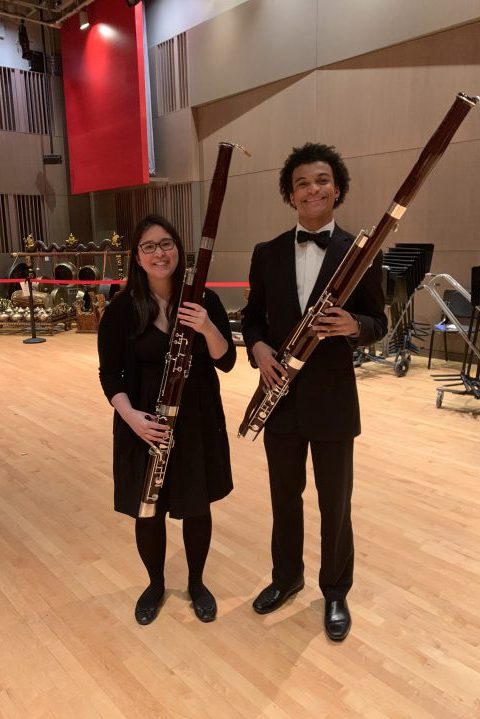
After graduating from Bowie High School in Maryland, Hosten hit the ground running at UMBC, with both his music and his passion for engineering, in equal measure. He joined the university orchestra and wind ensemble and is both a Meyerhoff Scholar and a MARC U*STAR Scholar.
Hosten cites his Meyerhoff acceptance as something that makes him particularly proud, and that has had a major impact on his experience. “It’s been a huge part in making sure that I have been successful and helping me to be where I am today,” he shares.
Hosten’s current research explores how nanocapsules could be added to dental resin to revolutionize fillings. Should a person’s filling crack, the nanocapsules would break and the void in the tooth would be filled without a trip back to the dentist. Presently, Hosten is working to coat the particles with a silica shell to keep them uniform and prevent bursting.
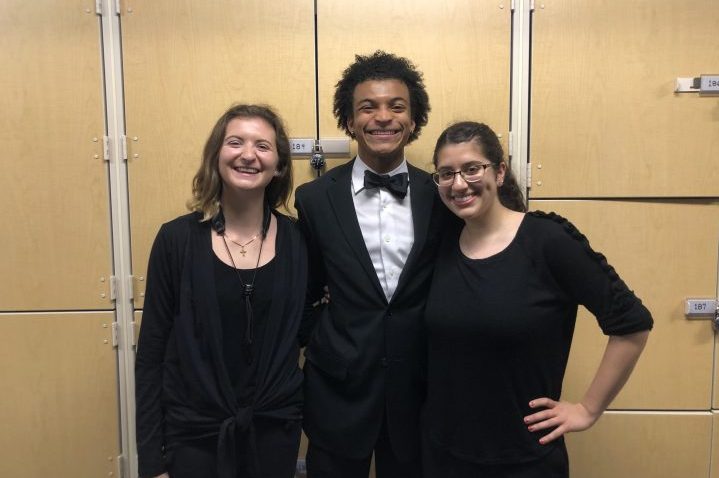
One of Hosten’s mentors, Erin Lavik, professor of chemical, biochemical and environmental engineering, appreciates how his lab work is positively influenced by his stage work.
“It is challenging to be a chemical engineer, but to do that while also being a tremendous musician is humbling,” says Lavik, who herself has experience with theatre. “There’s also a critical interplay between the two,” she explains. “It isn’t surprising to me that Justin can approach a challenge from multiple perspectives and come up with elegant, creative solutions.”
This fall, Hosten will pursue his Ph.D. in biomedical engineering as part of a joint program between the Georgia Institute of Technology and Emory University.
Making waves
“I started swimming because my mom told me that my local summer team needed more kids my age…which was a complete lie. The reason she wanted me to swim was so that I wouldn’t drown when I went to the pool.”
It’s not exactly the auspicious beginning you would expect from a Danish national swimming champion, but that’s exactly how Alexander Gliese’s story begins.
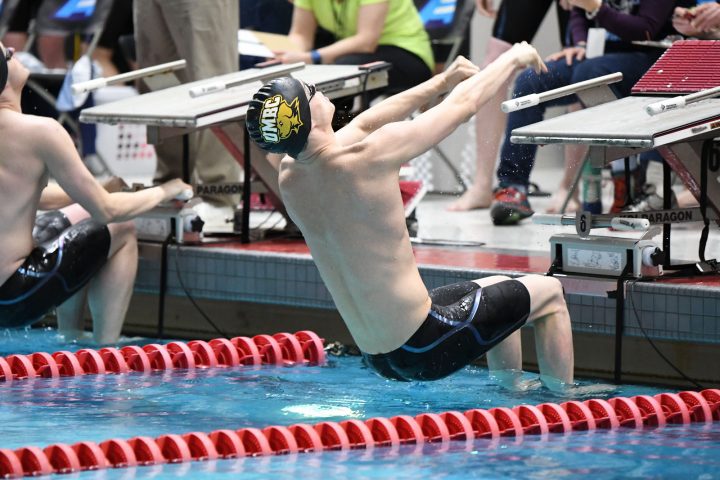
The Danish-born competitor has a score of swimming accolades attached to his name, but he didn’t develop a true love for the sport until he was a teenager. “I was swimming competitively on a year-round team and it wasn’t until I was about 14 that I began to really like the sport,” says Gliese. “At this point, I started to win events at the Maryland state championships.”
When the time came to look at colleges, UMBC immediately stood out to the young swimmer. And once he committed, he never looked back. “I’m happy that I chose UMBC as the coaching staff and my teammates have helped me grow into the person that I am today,” he reflects.
While his numerous athletic achievements would be impressive alone, Gliese managed to perform just as well in the classroom as he did in the pool. The Meyerhoff Scholar is graduating with a mechanical engineering degree this May and dedicated his time to researching energy harvesting and design optimization. He also credits his academic work for helping him improve his athletic performance.
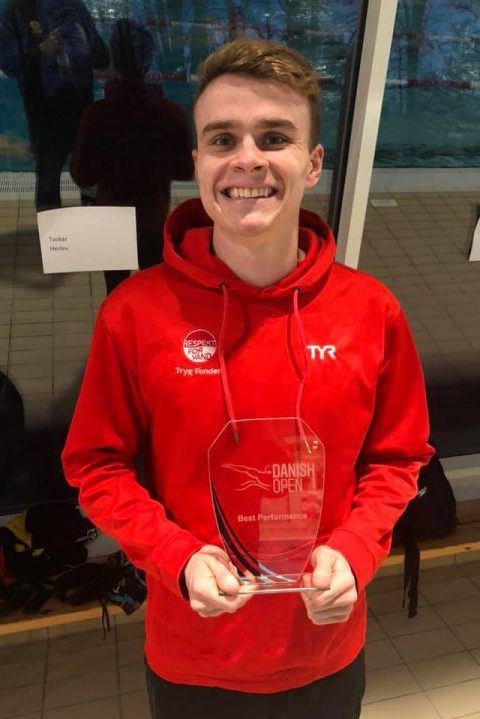
Soobum Lee, UMBC assistant professor of mechanical engineering, has served as mentor for Gliese and has been impressed by his research contributions. “Alex has consistently shown promise and commitment” as a researcher, offering “a unique perspective” while applying the research experience to his own learning, says Lee.
“During his involvement of my energy harvesting research for wind turbine monitoring, Alex proactively and voluntarily worked on brainstorming, CAD modeling, and testing,” Lee explains. “His diligence seriously accelerated the project, and his sincerity positively affected my graduate students.”
“I think that my swimming and my academics intersect very well since I have always been interested in how I can maximize my efficiency in the pool,” Gliese says. “I feel that my knowledge from mechanical engineering has helped me to understand what positions and movements in the water will help me to swim faster in the pool.”
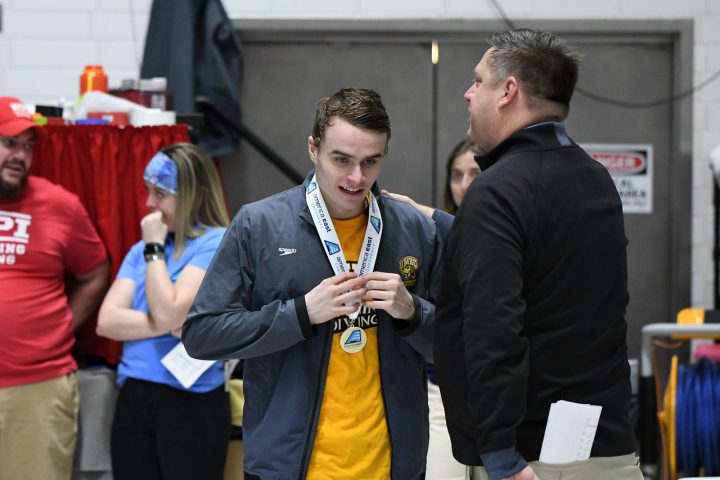
His success in research and swimming are also connected by the same underlying work ethic and tenacity. Neil Rothman, professor of practice in mechanical engineering, shares that as busy as Gliese was with U.S. and international swimming competitions, “he would show up to class with a smile on his face. I had him in four different courses over a period of three years and he was consistently an excellent and dedicated student. The busier he got and the harder work became, he seemed to enjoy it even more.”
Gliese’s approach of applying his classroom knowledge to the pool can certainly be deemed a success. He’s a two-time CCSA Champion, two-time America East champion, 2019 America East Most Outstanding Male Swimmer, two-time America East All-Academic Team member, two-time CSCAA Scholar All-American, UMBC record holder in 100 backstroke and 200 medley relay, and the Danish national record holder in 200 backstroke. He even broke Michael Phelps’ 16-year-old NBAC record during the back split of the 400 medley relay in January 2019.
Head swimming and diving coach Chad Cradock ’97, psychology, says Gliese “has always been well-balanced in the classroom and in the pool. They say the price of excellence is discipline. Alex is one of the most disciplined, focused, and hardworking swimmers I have ever worked with and has earned his way to the world stage each and every day.”
After commencement, Gliese will compete in the World University Games. He will then take time to train for the Danish Olympic swimming qualifiers before pursuing a Ph.D. in mechanical engineering.
As much as he’s made a mark on UMBC, Gliese thinks about the mark UMBC has made on him. “UMBC has helped me to not only grow as a student and a swimmer, but as a person.” Sharing that the UMBC community is like family, he says, “it’s allowed me to thrive and create bonds that will last a lifetime.”
Banner image: Alexia Petasis ‘19, left, at UMBC’s fall Senior Dance Concert. Photo by Marlayna Demond ‘11.
Tags: Athletics, CAHSS, CBEE, COEIT, Dance, Economics, INDS, MechE, MeyerhoffScholars, WomensCenter

